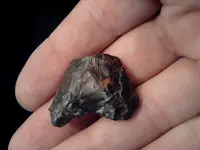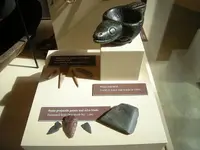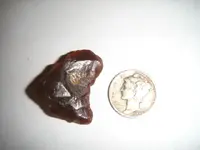can you show me the broken tip? looks kinda similar to this one found not all that far from where you found yours....size, shape and material...I call this one a spoke shave as the broken tip looks suspicious. On the beaches you hunt most of the points are already "in place" so to speak, they are not being deposited by an erosion event. What happens is after a good storm when the waves really pounded the beach, the gravel gets turned over and "new" stuff gets rotated to the top. You can tell the difference between "new" (erosion event stuff) and the pieces I am talking about by how polished the flaking has become. The "new" pieces are mostly whole with very sharp edges...but most of the stuff we are finding is very smooth and worn down...(and often broken). Remember too that gravel on these beaches sorts itself out by size, it is most usual to find smaller points with the smaller gravel and larger with the larger. Also on these beaches, walk along the edge of where the actual beach meets the flat of the clam beds....I am sure you know what I am talking about. This is where the heavier stuff accumulates.
Are you finding agates or agate marine fossils?




 HH
HH

